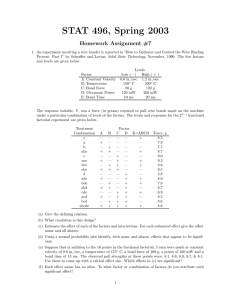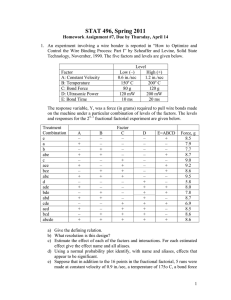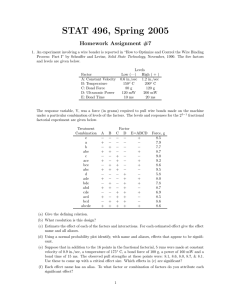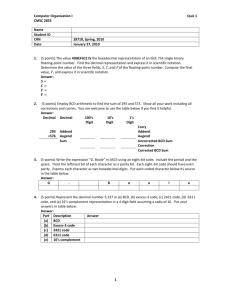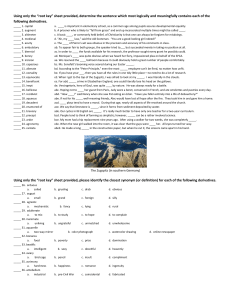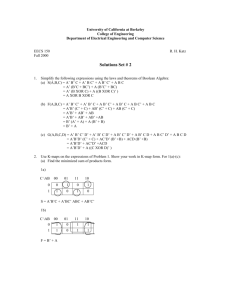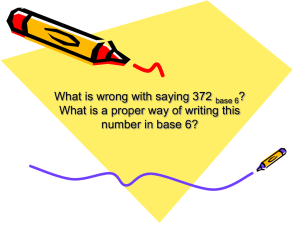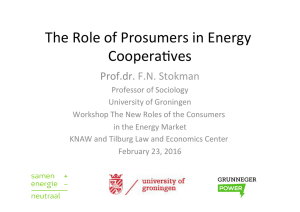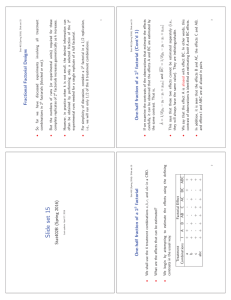STAT 402 Take Home Exam Questions
advertisement
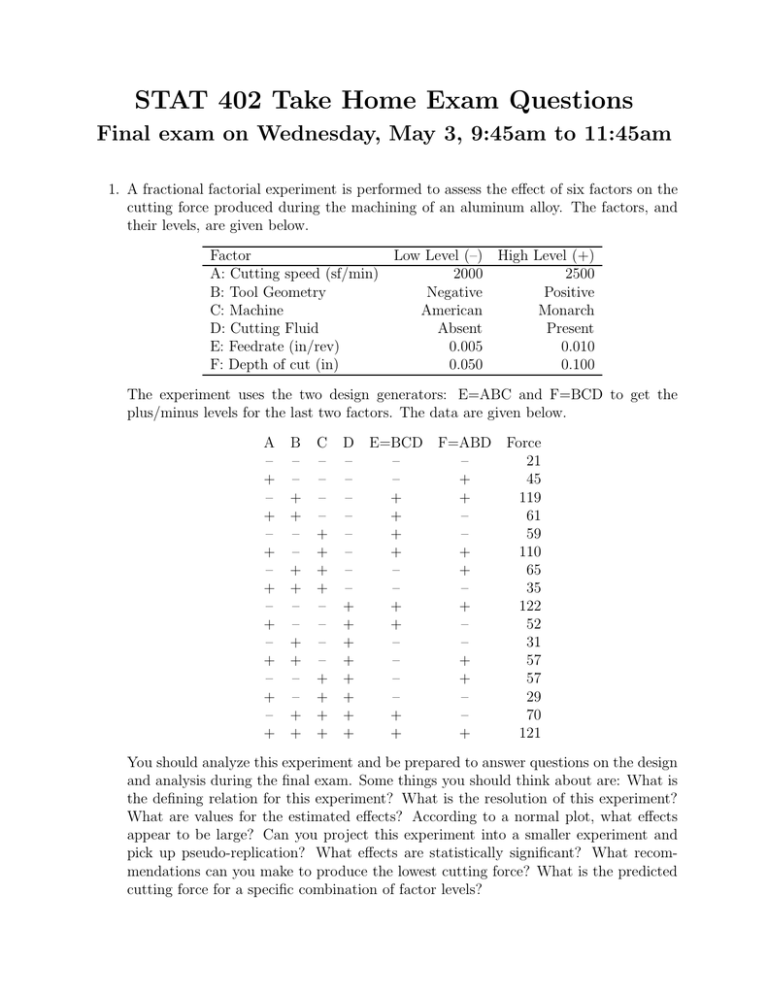
STAT 402 Take Home Exam Questions Final exam on Wednesday, May 3, 9:45am to 11:45am 1. A fractional factorial experiment is performed to assess the effect of six factors on the cutting force produced during the machining of an aluminum alloy. The factors, and their levels, are given below. Factor Low Level (–) High Level (+) A: Cutting speed (sf/min) 2000 2500 B: Tool Geometry Negative Positive C: Machine American Monarch D: Cutting Fluid Absent Present E: Feedrate (in/rev) 0.005 0.010 F: Depth of cut (in) 0.050 0.100 The experiment uses the two design generators: E=ABC and F=BCD to get the plus/minus levels for the last two factors. The data are given below. A – + – + – + – + – + – + – + – + B – – + + – – + + – – + + – – + + C – – – – + + + + – – – – + + + + D – – – – – – – – + + + + + + + + E=BCD F=ABD Force – – 21 – + 45 + + 119 + – 61 + – 59 + + 110 – + 65 – – 35 + + 122 + – 52 – – 31 – + 57 – + 57 – – 29 + – 70 + + 121 You should analyze this experiment and be prepared to answer questions on the design and analysis during the final exam. Some things you should think about are: What is the defining relation for this experiment? What is the resolution of this experiment? What are values for the estimated effects? According to a normal plot, what effects appear to be large? Can you project this experiment into a smaller experiment and pick up pseudo-replication? What effects are statistically significant? What recommendations can you make to produce the lowest cutting force? What is the predicted cutting force for a specific combination of factor levels? 2. A researcher, who is planning a 27−3 fractional factorial has in mind two separate choices of generators. Choice 1: E=ABCD, F=ACD, G=BCD Choice 2: E=ABC, F=BCD, G=ACD On the attached sheet; • Write out the entire defining relation for each choice. • Which choice is most appealing and why? • Give the treatment combinations, in terms of —’s and +’s and the shorthand notation, e.g. (1), bc, etc. for your most appealing choice. Turn in the sheet at the beginning of the final exam. 3. Write an essay on a separate sheet of paper that addresses the following. You are planning an experiment with four factors, each at two levels. You are limited to 16 runs. The runs will be completely randomized. For each of the choices below give pros and cons of running the experiment in the way described. Be sure to comment on estimating error variability and the degrees of freedom available for that estimate. Which design would you choose and why? (a) Choice 1: A single replicate of a full 24 factorial. (b) Choice 2: Two replicates of a (c) Choice 3: A 1 2 1 2 fraction of a 24 , a 24−1 IV . fraction of a 24 , a 24−1 IV , with 8 center points 4. Throughout the semester we have discussed the three basic principles of experimental design: Control of outside variables, Replication within the experiment and Randomization. On a separate sheet of paper respond to the following in well organized essays. (a) Briefly explain why each principle is important. (b) At the end of the semester we have discussed single and fractional replication experiments (violations of the principle of Replication). What difficulties does this violation create. Treatment run Combination 1 2 3 4 5 6 7 8 9 10 11 12 13 14 15 16 A B Factor C D E F G
